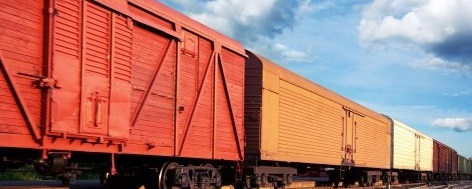
In Russia, for the first time in four years, the production of freight cars may begin to grow
In recent years, there has been a significant decline in the Russian railway engineering industry. In 2012, a total of 71.6 thousand wagons were produced, in 2013 – 60.1 thousand, in 2014 – 55.1 thousand, in 2015 – 29.2 thousand. In 2016, production will remain at the level of 2015 and may exceed it.
This conclusion was reached in his report by the head of the Research Department of Transport Engineering of the Institute of Problems of Natural Monopolies (IPEM) Georgy Zobov at the 7th International conference "Railway transportation of mining and metallurgical cargoes". From 2014 to 2016, the rate of decommissioning of freight cars exceeded the rate of deliveries of new rolling stock to the network. At the same time, for 8 months of 2016, compared to the same period last year, loading increased by 1.5%, cargo turnover by 1.6%, transportation by 0.6%. The increase in the volume of write-off of the fleet of freight cars amounted to 7.4%, and their production increased by 5.9%. Due to the increase in freight work and the rapid retirement of the fleet, the need for rolling stock has increased.
State subsidies to support freight car building totaling 8.8 billion rubles, budgeted for 2016, also contribute to the growth of production, the report notes. Georgy Zobov believes that it is important not only to create service centers for warranty maintenance and repair of such cars, but also to provide them with spare parts. It is also necessary to improve the performance of wagons in conditions of infrastructure constraints.
"A balance is needed between the real possibilities of producing various models of a specialized fleet of wagons and preventing a shortage of such a fleet due to the ban on modernization. A balance is needed between the costs of certifying new models of a specialized fleet and upgrading wagons with an extension," the IPEM analyst believes.
In addition, there is a risk not only of an increase in transportation costs, but also of non-removal of cargo due to a shortage of a specialized fleet of wagons. However, rolling stock operators note that in the gondola segment the necessary balance will be achieved by winter. According to Vladimir Sosipatorov, General Director of the Vostok1520 railway operator, the optimal fleet of gondola cars on the Russian Railways network should be 470 thousand.
"The fleet of gondola cars of about 470 thousand units, which will be reached on the Russian Railways network by November, is the most balanced level to meet the needs of shippers and infrastructure," Vladimir Sosipatorov said during the conference.
According to the top manager, this year there is an increased demand for gondola cars at local loading points. This is due to large-scale summer track works, especially on the Eastern polygon of the network, as well as seasonal redistribution of the fleet for the transportation of goods of various industries. The peak was passed in September, the galloping write-off of gondola cars is gradually ending, Sosipatorov believes.
"Car-building plants are ready to meet the necessary need for new rolling stock. The improvement of the planning culture of Russian Railways and the timely steady return of empty cargo traffic to mass loading points give a tangible positive effect," the company's press release notes.
The export of growing volumes of export coal is ensured by the concentration of the fleet and the use of new generation wagons in the busiest directions. According to preliminary estimates, the overall effect of the use of high-capacity wagons in 2016 will be expressed in an additional 3 million tons of coal transported, the report says.
"Synchronization of technological actions of transportation participants, constant scientific and survey work are the basis for the systematic growth of the number of new generation wagons. Already, the modernization of the port infrastructure is planned for a new rolling stock (with loads - Gudok.ru ) not only 25, but also 27 tons per axle," stated Vladimir Sosipatorov.

 Заказать
Заказать Personal
Personal

















